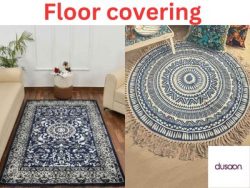exterior rendering
In the world of architecture and design, 3D rendering exterior design is a game-changer. This innovative technology has revolutionized the way architects, designers, developers, and homeowners visualize and bring their ideas to life. Gone are the days when blueprints and 2D drawings were the only tools available to communicate design concepts. Today, 3D rendering offers a realistic and immersive way to see how a structure will look in its actual environment before construction even begins.
This blog will dive into what 3D rendering exterior design is, how it works, the benefits it offers, and how it is reshaping the architectural industry.
What Is 3D Rendering Exterior Design?
3D rendering exterior design is the process of creating three-dimensional, lifelike visual representations of a building’s exterior. It involves using advanced software to generate realistic images of homes, office buildings, or any other structures in their intended settings. These designs take into account not just the building itself but also environmental elements such as landscaping, lighting, and weather conditions.
The resulting images are so realistic that they provide a virtual tour of the project before it’s even built. By allowing stakeholders to see how the building will look in real life, 3D exterior renderings offer a powerful way to make informed design choices and adjustments early in the planning process.
How Does 3D Rendering Exterior Design Work?
-
Conceptualization and 3D ModelingThe process begins with creating a 3D model of the building based on architectural plans, blueprints, or sketches. Using specialized software, designers input the exact dimensions, shapes, and layouts of the structure.
-
Material and Texture ApplicationOnce the model is built, textures and materials are applied to mimic real-life surfaces such as wood, metal, glass, stone, and concrete. This gives the structure a realistic appearance, allowing you to visualize how it will look with different finishes and materials.
-
Lighting and Environmental SettingsLighting plays a crucial role in 3D rendering. By simulating natural and artificial light sources, designers can show how the building will look at different times of day or under various weather conditions. Environmental elements like landscaping, trees, driveways, and pathways are added to complete the setting.
-
Rendering and Post-ProcessingAfter the 3D model is fully developed, rendering software generates photorealistic images or animations. Post-processing techniques can be applied to enhance the image quality, adding depth, shadows, reflections, and other visual effects to make the rendering as lifelike as possible.
Benefits of 3D Rendering Exterior Design
-
Realistic VisualizationOne of the most significant advantages of 3D rendering exterior design is its ability to produce highly realistic images. Unlike 2D drawings, which can be hard to interpret, 3D renderings give a true-to-life perspective of what the final project will look like. This level of realism helps clients and stakeholders visualize the design more clearly, making it easier to provide feedback and approve design elements.
-
Better Communication Between StakeholdersCommunication is key in any architectural project, and 3D renderings serve as a universal language. Clients, architects, contractors, and designers can all view the same visual representation and ensure that everyone is on the same page. This reduces misunderstandings and ensures that the design vision is accurately communicated from concept to completion.
-
Cost and Time EfficiencyInvesting in 3D rendering early in the design process can save time and money in the long run. By visualizing the building in a detailed and realistic way, stakeholders can identify potential design flaws, material clashes, or functional issues before construction starts. This proactive approach minimizes the need for expensive changes or revisions during the construction phase.
-
Design Flexibility3D rendering exterior design provides flexibility when making design changes. With the click of a button, architects can experiment with different materials, colors, or even structural adjustments. This ability to quickly visualize different design options allows clients to make informed decisions without delaying the project.
-
Marketing and Presentation ToolHigh-quality 3D renderings are powerful tools for marketing and presentation. Real estate developers, for example, use these renderings to showcase properties to potential buyers, even before construction begins. A visually stunning, photorealistic image can create excitement and generate interest, helping to sell or lease properties more quickly.
Applications of 3D Rendering Exterior Design
-
Residential DesignWhether it’s a single-family home or a multi-unit complex, 3D renderings help homeowners and developers visualize every aspect of the exterior design. From material choices to landscaping, these renderings ensure that the final product meets the client’s aesthetic and functional expectations.
-
Commercial and Industrial ProjectsFor commercial developments, such as office buildings, hotels, or retail spaces, 3D exterior design renderings provide an in-depth view of the design, enabling stakeholders to assess the project’s impact on the surrounding environment and make necessary adjustments.
-
Urban Planning and LandscapingCity planners and landscape designers use 3D rendering to visualize how new structures will blend into the existing environment. These renderings are also useful for designing parks, public spaces, and infrastructure, allowing for a comprehensive view of the entire landscape.
The Future of 3D Rendering Exterior Design
As technology continues to advance, 3D rendering is becoming even more immersive and interactive. With the rise of virtual reality (VR) and augmented reality (AR), clients can now take virtual walkthroughs of their projects, experiencing the design as if it were already built. This level of interactivity makes the design process more engaging and allows for even more precise adjustments.
Additionally, artificial intelligence (AI) is being integrated into rendering software, speeding up the design process and making it easier to generate accurate, high-quality renderings with less manual input.
Conclusion
3D rendering exterior design has fundamentally transformed how we approach architectural projects. By offering photorealistic visualizations, improving communication, and enabling design flexibility, 3D rendering provides a powerful tool for architects, developers, and clients alike. Whether you’re planning a residential, commercial, or large-scale urban project, 3D rendering helps bring your architectural vision to life with greater precision, creativity, and confidence.


































































